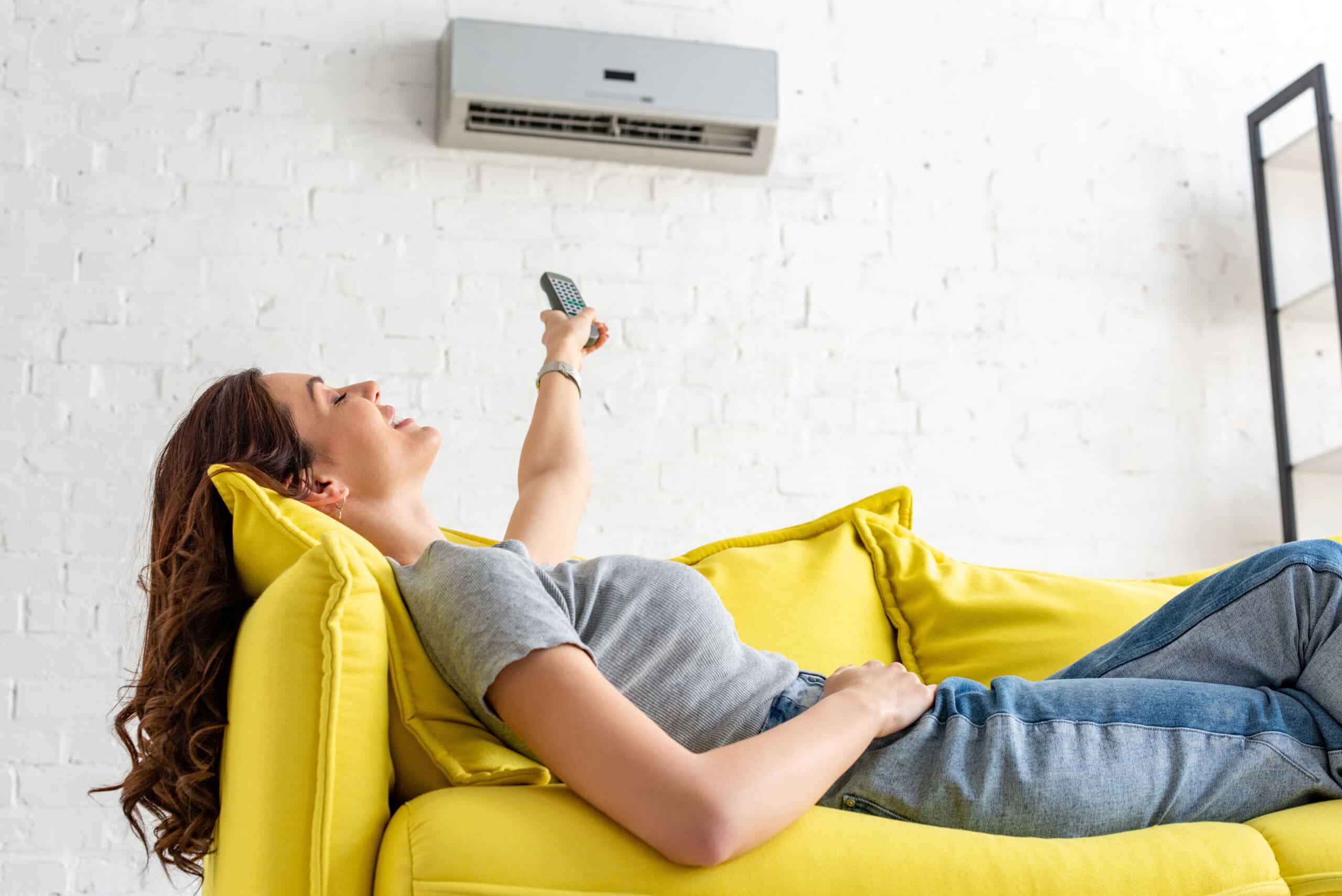Here in the Northeast, summers can get HOT. It’s not uncommon for temperatures to average 90+ during the “dog days” and we can usually expect to run our air conditioners 3-4 months out of the year. With electricity rates in the region still climbing, deciding when and how long to use your AC system during summer can become a serious consideration for your budget. When researching ways to stay cool while also saving on energy costs, you may have come across SEER ratings. If you’ve been wondering what these ratings mean in terms of real-world cost savings, read on! We’ve put together this article to help cover your bases, as well as discussing some of the myths around it.
What’s a SEER Rating?
As we’ve covered in a previous article about the costs associated with a new AC system, SEER rating is often a major topic of concern for homeowners. SEER stands for Seasonal Energy Efficiency Ratio (That’s a mouthful, right?) and is only one of several factors that determine the ultimate efficiency you’ll receive from a new air conditioner. It is used by both consumers and installers to easily identify a product’s expected energy cost to operate, and all AC equipment sold in the U.S. must have a SEER rating. When reading the SEER rating, just remember the higher the rating the higher the efficiency. While there is a lot of math and physics that take place behind the scenes, you can understand the basics of SEER through a simple equation:
SEER = Seasonal Cooling Output ÷ Seasonal Energy Input
In other words, an AC system’s efficiency is how much cooling you get for the amount of energy you put in. An inefficient system will cool half as well and cost twice as much to operate compared with an energy efficient model that’s been properly installed (More on this later!).
SEER vs. SEER2
In the past, an AC system’s efficiency could be measured in the range of only 8-10 SEER, with 11-12 being the high end. While considered acceptable at the time, today’s systems have SEER ratings as high as 20+!
However, some industry professionals noticed that SEER doesn’t do a great job of accurately measuring a homeowner’s true operating costs. As we mentioned earlier, many factors determine how efficient a unit is, and even highly efficient AC systems can be hampered through less than ideal installation conditions or limitations due to existing ductwork design. This is where SEER2 comes in. While the original SEER rating assumes ideal operating conditions when conducting tests, SEER2 uses averages that are more likely to be found in actual residential settings. Simply put, SEER2 accomplishes the same goal but in a more accurate way than the old SEER rating.
Why Do SEER2 Ratings Look Lower?
SEER2 still rates the seasonal estimated energy efficiency of the unit. It just uses more realistic testing conditions to provide that number. Because of this, you may have noticed that equivalent units (models prior to Jan. 2023) have higher “SEER” ratings than the new SEER2 models. In reality, these are actually the same. For example:
SEER Rating 14 = SEER2 Rating 13.4
It is important to know that identical equipment will still have the same efficiency, regardless of the rating system it shows on the box which is only determined by being manufactured before or after Jan. 1st, 2023.
What’s Considered a Good SEER Rating?
As of Jan. 1st, 2023, the minimum allowable SEER rating for sale in the Northeast is 14 SEER (13.4 SEER2) for AC systems, and 15 SEER (14.6 SEER2) for heat pumps. Previously manufactured models are still allowed to be sold and installed, as long as they meet the old minimum SEER rating of 13 and 14 respectively.
When shopping for a new AC system, high efficiency models typically start at 16 SEER. For situations where you are frequently relying on your system, such as a heat pump which does heat and AC year-round, you’ll want the highest SEER rating you can afford. In this case, 20 SEER or higher will give you the most efficiency, performance, and savings over the lifetime of the equipment.
Aren’t High SEER Systems More Expensive To Maintain?
This is a myth! While it’s true that higher end equipment may have more expensive components overall, when properly designed for the home and needs of the homeowner, they more than pay for themselves in energy savings. Since AC systems need annual maintenance to stay in peak performance and maintain your manufacturer warranty regardless of SEER rating, your maintenance costs will be the same unless a major repair is needed.
It’s estimated that a 20 SEER unit is 43% more efficient than a 14 SEER.
This means for every $100 you’d spend operating the lower SEER unit, you could save up to $57 in energy costs.
SEER Rating Is Only One Factor for Savings
While a good indicator of potential efficiency, SEER ratings are not the final word when it comes to saving money. There are many other factors that can determine the ultimate efficiency and lifetime savings of a new system, such as:
- Unit Being Correctly Sized for Home
- Existing Ductwork Design
- Size of Coil Installed
- Size of Air Handler
- Single Stage, Multi-Stage, or Inverter
- Frequency of Use (Main, Second, Vacation Home)
- How Long You’ll Live In Your Home
- Expertise During Installation
All of the above will play a role in how much you’ll spend in energy costs, and whether investing in a higher or lower SEER rated piece of equipment is right for your specific needs. It’s important to do your research, which is why Heritage always recommends starting with an in-home visit with a professional who can sit down with you and help create a customized solution that will give you the comfort and savings you want, with a design that is meant to give you a system you’ll continue enjoy for the years to come.
If you’re considering a high efficiency AC system for your home, we’re here to help you get the information you need to make the decision that’s right for you!
Not the right time? One of the major factors when deciding on your next install should be to make sure you have a team you can trust for a job done right. If you’re curious about why Heritage is the region’s preferred choice for new system installations, follow the link below!

Financing Made Easy
When you choose Heritage, you can rest easy knowing that we provide straightforward options to help you budget for a complete solution that will last you for decades to come.
VIEW FINANCING OPTIONS
Complete Care Plan
With Complete Care, enjoy peace of mind knowing your home's plumbing, heating, cooling, and electrical needs are handled year after year—hassle-free, with added benefits.
VIEW PLAN







